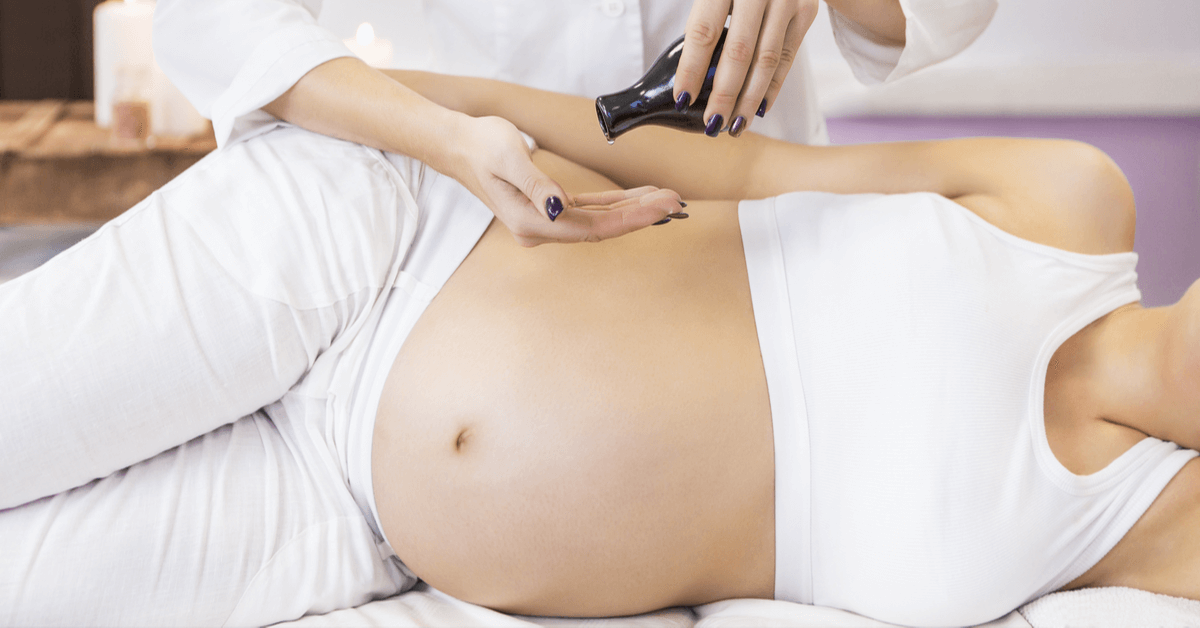When you find out that you will have a baby, a little fear fills you with happiness. This fear may include concerns about your baby’s future, caring for him, or whether you can be a good mother. At the same time, the very moment of birth may seem frightening to you.
Vaginal birth is a form of birth that many women shy away from, and the first thing that comes to mind when talking about normal birth is labour and vaginal incision. However, a vaginal incision called episiotomy is not applied in every normal delivery. Breathing exercises to facilitate labour and perineal massage will change your perspective on birth.
What is perineal massage? What benefits does it have for pregnant women? When and how is it done? We have compiled the answers to all these questions for you.
What is Perineum?
The thin area between the vagina and the anus is called the perineum. The perineum is an area with a diameter of about 3 cm, and it supports pelvic floor muscles, reproductive organs and intestines. Therefore, the control of urine and faeces is under the management of the perineal region.
During vaginal delivery, as the baby’s head and body protrude, an above-normal stretch occurs in the perineum. This stretch can cause uncontrolled vaginal tears in the area. To prevent such ruptures from occurring, it is sometimes necessary to make an incision in the perineal area during delivery. The incision is made by cutting the lower wall of the vagina and the pelvic muscles by about 3-4 cm. This incision is called an episiotomy. Episiotomy is a useful application that prevents self-tearing of the perineum when necessary and prevents tears that are difficult to heal. However, if the area has sufficient elasticity, an incision may not be required.
What is Perineal Massage?
The massage application performed with the help of fingers by using some oils to relax and stretch the muscles in the perineal region is called perineal massage.
Perineal massage is done by stretching the inner tissues of the lower part of the vagina. When these tissues are stretched with massage, less pain is felt during the baby’s passage, and the risk of rupture in the perineum is reduced.
Benefits of Perineal Massage
Many studies have shown that compared to pregnant women who apply perineal massage and those who do not, episiotomy is less needed in pregnant women who do massage. For this reason, experts recommend this massage from the last stages of pregnancy.
The benefits of perineal massage for pregnant women are as follows;
- Prepares the perineal tissue for birth: The perineal structure is much tenser, especially in first births, since it does not reach sufficient flexibility. This massage helps to relax the internal tissues and make them ready for delivery.
- Prevents uncontrolled tearing: The width of the cervix shows an opening of about 10 cm at birth to allow the baby to pass. However, the baby’s head region may force the surrounding thin tissue during the transition. If adequate flexibility is not available or episiotomy is not performed, difficult-to-repair ruptures may occur in the perineal area. Perineal massage gives flexibility to the area and prevents these tears.
- Reduces the need for episiotomy: There are different types of episiotomies. The incision can be made at different angles and at different depths, depending on the situation. A minor incision is required with the perineal massage.
- Relieves labour pains: This massage, which helps to relax the perineal muscles, provides relief from tension-related pains.
- Facilitates vaginal delivery: With perineal massage, the muscles gain sufficient flexibility, and an easier vaginal delivery occurs.
- Motivates the expectant mother: Pregnant women who are prepared for birth with perineal massage reduce their fear of birth because they feel more ready for birth.
Who Should Do This Massage?
It is unnecessary to have this massage done by a specialist or doctor to stretch the pelvic muscles. Perineal massage can be easily applied at home, and the expectant mother can apply herself if she wishes.
However, the growing abdomen in the last stages of pregnancy does not allow to continue the massage sufficiently. In such cases, pregnant women may seek help from their spouses. In short, the expectant mother or spouse can do the massage.
How to Do Perineal Massage?
Perineal massage is not a type of massage with very technical movements. For this reason, anyone can easily apply it.
So how is a perineal massage done?
- First, start the massage with an empty bladder. If you have urine, do it.
- Then, wash hands thoroughly with soap and water before the massage. If your nails are long, shorten them.
- Choose a safe and comfortable area for the massage. It can be done in the bedroom, on your bed or in the bathroom.
- Find a suitable position. Choose a position where you can easily reach the perineum while standing, with one foot placed on a high object, in the shower in the tub, lying on the bed with legs spread and knees bent, squatting, semi-sitting position, in short.
- Rub olive oil, almond oil, coconut oil or any aromatic oil or mixture of your choice on your fingers to ensure lubricity. Warm the fingers by rubbing them together.
- Insert the thumbs of both hands into the vagina up to the second knuckle (Approximately 4-5 cm).
- Feel the posterior wall of the vagina with your fingers. Start rubbing this area and the sides with light movements.
- Move the fingers to the right and left, positioning them at 3 and 9 o’clock and forming a U shape.
- If your partner is doing the massage, tell them to use their index fingers and have them do the same movements.
- Since there is no flexibility in the beginning, there may be difficulties. Don’t force yourself, and you will feel the tissue loosen and open as the progress of movement.
- Take care not to exceed 10 minutes while doing the massage.
When is Perineal Massage Given?
As the time to hold your baby in your arms approaches, the importance of the practices that will facilitate the birth begins to increase. For this reason, expectant mothers may wonder about the ideal time to start the perineal massage.
You can start perineal massage from the 34th week of pregnancy, and the application should be continued until birth, at least 3-4 times a week. The ideal time for massage is between 5-10 minutes.
What is the Success Rate of Perineal Massage?
Although the researches have had remarkable results about the advantages of massage, this success also depends on different factors. The skin structure of the pregnant, the large size of the baby and various complications that may occur at birth may cause the need for episiotomy in the pregnant despite the massage.
If the success rate is mentioned; in a study comparing 50 pregnant women who received perineal massage and 50 pregnant women who did not, it was seen that only 5 of 50 pregnant women who received massage needed a vaginal incision. In comparison, a vaginal incision was made in 46 of 50 pregnant women who were not massaged. In short, this result reveals how beneficial perineal massage is in normal birth and episiotomy.
Pregnants approaching their last weeks can get information about perineal massage by consulting their doctors and start applying it as soon as possible. But every pregnancy is different, and some special circumstances may hinder the application.
For this reason, you should definitely get your doctor’s approval beforehand.
Would you like to share your experiences and questions as a comment?
Have a nice and healthy day!







